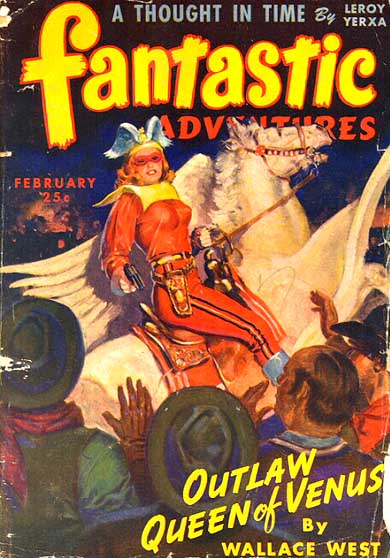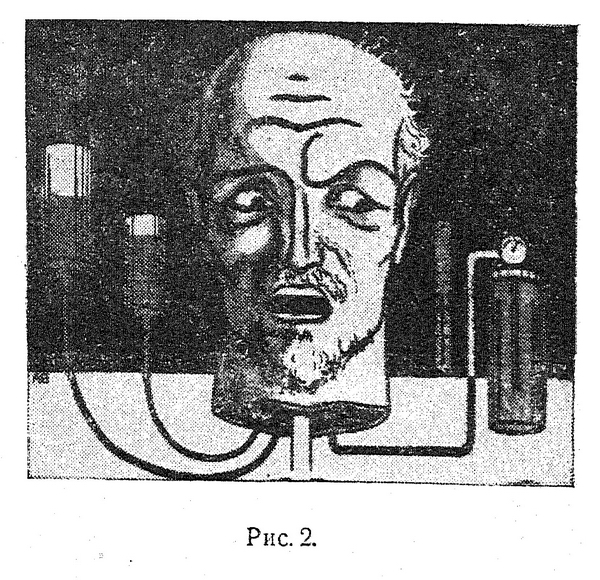|
1929 In Science Fiction
The year 1929 was marked, in science fiction, by the following events. Births and deaths Births * January 28 : Parke Godwin, American writer, (died 2013 in science fiction, 2013) * July 9 : Zheng Wenguang, Chinese writer, (died 2003) * July 10 : George Clayton Johnson, American writer, (died 2015 in science fiction, 2015) * August 27 : Ira Levin, American writer, (died 2007) * October 1 : :fr:Demètre Ioakimidis, Demètre Ioakimidis, French writer and anthologist (died 2012 in science fiction, 2012) * December 27 : Philippe Curval, French writer Deaths Events * Creation of the American magazine ''Wonder Stories'', edited by Hugo Gernsback. Literary releases Novels * '':fr:Jusqu'à la Lune en fusée aérienne, Mond-Rak 1'', by Otfrid von Hanstein. * ''The Air Seller'' by Alexander Belayev. Stories collections Short stories * '':fr:Le Dernier Homme (nouvelle), The last man'', by Wallace West. * '':fr:L'Éclair mortel, The Killing Flash'', by Hugo Gernsback ... [...More Info...] [...Related Items...] OR: [Wikipedia] [Google] [Baidu] |
Science Fiction
Science fiction (sometimes shortened to Sci-Fi or SF) is a genre of speculative fiction which typically deals with imaginative and futuristic concepts such as advanced science and technology, space exploration, time travel, parallel universes, extraterrestrial life, sentient artificial intelligence, cybernetics, certain forms of immortality (like mind uploading), and the singularity. Science fiction predicted several existing inventions, such as the atomic bomb, robots, and borazon, whose names entirely match their fictional predecessors. In addition, science fiction might serve as an outlet to facilitate future scientific and technological innovations. Science fiction can trace its roots to ancient mythology. It is also related to fantasy, horror, and superhero fiction and contains many subgenres. Its exact definition has long been disputed among authors, critics, scholars, and readers. Science fiction, in literature, film, television, and other media, has beco ... [...More Info...] [...Related Items...] OR: [Wikipedia] [Google] [Baidu] |
Hugo Gernsback
Hugo Gernsback (; born Hugo Gernsbacher, August 16, 1884 – August 19, 1967) was a Luxembourgish–American editor and magazine publisher, whose publications including the first science fiction magazine. His contributions to the genre as publisher were so significant that, along with the novelists H. G. Wells and Jules Verne, he is sometimes called "The Father of Science Fiction". In his honor, annual awards presented at the World Science Fiction Convention are named the "Hugo Award, Hugos". Personal life Gernsback was born in 1884 in Luxembourg City, to Berta (Dürlacher), a housewife, and Moritz Gernsbacher, a winemaker. His family was Jewish. Gernsback emigrated to the United States in 1904 and later became a naturalized citizen. He married three times: to Rose Harvey in 1906, Dorothy Kantrowitz in 1921, and Mary Hancher in 1951. In 1925, he founded radio station WRNY (New York City), WRNY, which was broadcast from the 18th floor of Roosevelt Hotel (New York), the Rooseve ... [...More Info...] [...Related Items...] OR: [Wikipedia] [Google] [Baidu] |
Maurice Elvey
Maurice Elvey (11 November 1887 – 28 August 1967) was one of the most prolific film directors in British history. He directed nearly 200 films between 1913 and 1957. During the silent film era he directed as many as twenty films per year. He also produced more than fifty films - his own as well as films directed by others.Rachael Low:''The History of British Film (Volume 3): The History of the British Film 1914 - 1918'' Linked 2015-03-18 Biography Born William Seward Folkard in Stockton-on-Tees, he ran away from home at the age of nine, seeking his fortune i ...[...More Info...] [...Related Items...] OR: [Wikipedia] [Google] [Baidu] |
High Treason (1929 British Film)
''High Treason'' is a 1929 film based on a play by Noel Pemberton Billing. It was directed by Maurice Elvey, and stars James Carew, Humberstone Wright, Benita Hume, Henry Vibart, Hayford Hobbs, Irene Rooke, and Jameson Thomas. Raymond Massey makes his first screen appearance in a small role. The film was initially produced as a silent but mid-way during production, Elvey was pushed by the studio to add sound to the film in order to cash in on the talkies. Although a third of the film was filmed in sound, Elvey maintained much of the silent footage and dubbed over the dialogue for shots that were originally silent, with Elvey himself voicing some of the minor characters, which he admitted when interviewed by the Mantioba Free Press shortly after the film was released in the US Likewise, BIP's ''Blackmail'', directed by Alfred Hitchcock was also turned into a sound picture mid-way during production (concurrently when ''High Treason'' was also in production) and many of the si ... [...More Info...] [...Related Items...] OR: [Wikipedia] [Google] [Baidu] |
Fritz Lang
Friedrich Christian Anton Lang (; December 5, 1890 – August 2, 1976), known as Fritz Lang, was an Austrian film director, screenwriter, and producer who worked in Germany and later the United States.Obituary ''Variety'', August 4, 1976, p. 63. One of the best-known ''émigrés'' from Germany's school of Expressionism, he was dubbed the "Master of Darkness" by the British Film Institute. He has been cited as one of the most influential filmmakers of all time. Lang's most celebrated films include the groundbreaking futuristic ''Metropolis'' (1927) and the influential '' M'' (1931), a film noir precursor. His 1929 film ''Woman in the Moon'' showcased the use of a multi-stage rocket, and also pioneered the concept of a rocket launch pad (a rocket standing upright against a tall building before launch having been slowly rolled into place) and the rocket-launch countdown clock. [...More Info...] [...Related Items...] OR: [Wikipedia] [Google] [Baidu] |
Woman In The Moon
''Woman in the Moon'' (German language, German ''Frau im Mond'') is a German science fiction silent film that premiered 15 October 1929 at the UFA-Palast am Zoo cinema in Berlin to an audience of 2,000. It is often considered to be one of the first "serious" science fiction films. A gallery of behind-the-scenes shots of movies featuring space travel or aliens. Page 68, photo caption: "Directed by Fritz Lang (third from right), the silent film ''Woman in the Moon'' (1929) is considered one of the first serious science fiction films and invented the countdown before the launch of a rocket. Many of the basics of space travel were presented to a mass audience for the first time." It was directed by Fritz Lang, and written by his wife Thea von Harbou, based on her 1928 novel ''The Rocket to the Moon (novel), The Rocket to the Moon''. It was released in the US as ''By Rocket to the Moon'' and in the UK as ''Woman in the Moon''. The basics of rocket travel were presented to a mass audi ... [...More Info...] [...Related Items...] OR: [Wikipedia] [Google] [Baidu] |
Arthur Conan Doyle
Sir Arthur Ignatius Conan Doyle (22 May 1859 – 7 July 1930) was a British writer and physician. He created the character Sherlock Holmes in 1887 for ''A Study in Scarlet'', the first of four novels and fifty-six short stories about Holmes and Dr. Watson. The Sherlock Holmes stories are milestones in the field of crime fiction. Doyle was a prolific writer; other than Holmes stories, his works include fantasy and science fiction stories about Professor Challenger and humorous stories about the Napoleonic soldier Brigadier Gerard, as well as plays, romances, poetry, non-fiction, and historical novels. One of Doyle's early short stories, " J. Habakuk Jephson's Statement" (1884), helped to popularise the mystery of the ''Mary Celeste''. Name Doyle is often referred to as "Sir Arthur Conan Doyle" or "Conan Doyle", implying that "Conan" is part of a compound surname rather than a middle name. His baptism entry in the register of St Mary's Cathedral, Edinburgh, gives "Arth ... [...More Info...] [...Related Items...] OR: [Wikipedia] [Google] [Baidu] |
The Disintegration Machine
"The Disintegration Machine" is a science fiction short story by British writer Arthur Conan Doyle. It was first published in ''The Strand Magazine'' in January 1929. The story centres on the discovery of a machine capable of disintegrating objects and reforming them as they were. This short story is a part of the "Challenger series", a collection of stories about the wealthy eccentric adventurer Professor Challenger George Edward Challenger is a fictional character in a series of fantasy and science fiction stories by Sir Arthur Conan Doyle. Unlike Conan Doyle's self-controlled, analytical character, Sherlock Holmes, Professor Challenger is an aggressive, .... Plot summary Professor Challenger, a big burly man, is arguing with people who are persistently calling him on the telephone when his young friend Malone, a reporter for ''The Daily Gazette'', enters and requests Challenger accompany him to inspect the discovery of Theodore Nemor, who claims to have invented a machin ... [...More Info...] [...Related Items...] OR: [Wikipedia] [Google] [Baidu] |
Wallace West
Wallace West ( – ) was an American science fiction writers, science fiction writer. Biography He was born in 1900 in science fiction, 1900. He began publishing during 1927 with the story "Loup-Garou" in ''Weird Tales''. The majority of West's work, which was published prior to the 1960s, was short fiction. His few novels, mostly published after World War II, were mostly re-workings of his pre-war short fiction. He is credited with suggesting the plot to the Arch Oboler radio play ''Profits Unlimited'' (in ''Fourteen Radio Plays''. Random House 1940). Bibliography Film history *''Alice in Wonderland'' (1934) *''Betty Boop in Snow-White'' (1934) *''Paramount Newsreel Men with Admiral Byrd in Little America'' (1934) Novels *''The Bird of Time'' (1959) * ''Lords of Atlantis'' (1960) *''The Memory Bank'' (1962) *''River of Time'' (1963) *''The Time-Lockers'' (1964) *''The Everlasting Exiles'' (1967) Short stories *The Last Filibuster (1967) References * * External li ... [...More Info...] [...Related Items...] OR: [Wikipedia] [Google] [Baidu] |
Alexander Belayev
Alexander Romanovich Belyaev (russian: Алекса́ндр Рома́нович Беля́ев, ; – 6 January 1942) was a Soviet Russian writer of science fiction. His works from the 1920s and 1930s made him a highly regarded figure in Russian science fiction, often referred to as "Russia's Jules Verne". Belyaev's best known books include ''Professor Dowell's Head'', ''Amphibian Man'', ''Ariel'', and '' The Air Seller''. Biography Alexander Belyaev was born in Smolensk in the family of an Orthodox priest. His father, after losing two other children (Alexander's sister Nina died at childhood from sarcoma and his brother Vasiliy, a veterinary student, drowned during a boat trip), wanted him to continue the family tradition and enrolled Alexander into Smolensk seminary. Belyaev, on the other hand, didn't feel particularly religious and even became an atheist in seminary. After graduating he didn't take his vows and enrolled into a law school. While he studied law his father ... [...More Info...] [...Related Items...] OR: [Wikipedia] [Google] [Baidu] |






